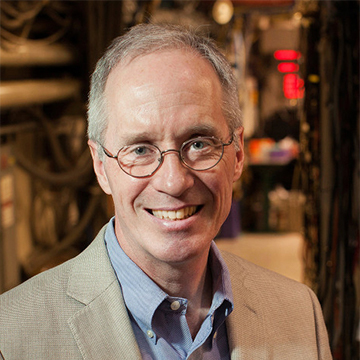
Joel Donald Brock
Biography
After receiving his doctoral degree, Brock spent two years as a postdoctoral research associate at the Massachusetts Institute of Technology and then joined the Cornell faculty in 1989. He served as Director of the School of Applied & Engineering Physics from 2000-2007. At Cornell, he is affiliated with the Cornell Center for Materials Research (CCMR), the Energy Materials Center at Cornell (emc2), and is Director of the Cornell High Energy Synchrotron Source (CHESS). He is a member of the American Crystallography Association, the Materials Research Society, the American Association for the Advancement of Science, the American Society of Engineering Education, Sigma Xi, the Union of Concerned Scientists, and The Materials Society. Brock is a fellow of the American Physical Society.
Research Interests
For over 100 years, our fundamental understanding of the structure of materials on atomic length scales has been advanced by direct structural measurements using x-rays. Modern synchrotrons provide over 8 orders of magnitude higher fluxes than laboratory based sources. This flux enables us to utilize higher resolution: higher angular resolution for diffraction, higher energy resolution for spectroscopies, higher time resolution for dynamics, and higher spatial resolution for imaging. We employ modern synchrotron-based x-ray techniques to measure the structure directly on length-scales ranging from 1 - 50,000Å on time scales ranging from 10-6 - 103 seconds. We are currently concentrating our studies on pulsed laser deposition (PLD) of complex oxide thin films.
The desire to manufacture devices with characteristic features on (sub)nanometer length scales has driven an enormous effort to create thin films with precisely controlled chemical composition, crystal structure and morphology. Energetic processing techniques offer the enticing prospect of gaining additional control at the nanoscale over thin-film deposition and processing. However, our fundamental understanding of non-thermal growth and surface processing is in an early stage of development. We are studying the fundamental processes governing deposition via Pulsed Laser Deposition (PLD). Empirically, by tuning the substrate temperature, background gas pressure, laser pulse rate, and energy density of the laser pulse, high quality films of many cubic perovskite (e.g., colossal magnetoresistance (CMR), piezoelectric, and high TC superconducting materials) can be grown using PLD. Our time-resolved x-ray structural measurements directly test proposed growth models. This research program is a component of the CCMR's IRG-3 and is based at CHESS.
I am also working to develop the next generation of x-ray sources. LINAC based x-ray sources such as (pulsed) X-ray Free Electron Lasers (XFELs) and (cw) Energy Recovery LINACs (ERLs) will create diffraction limited and degenerate x-ray beams that will enable coherent and time-resolved techniques previously only possible with optical lasers. Our long term goal is to generate, manipulate, and utilize coherent x-ray beams for atomic-scale structural measurements on the relevant fundamental time-scales. Discovering and optimizing catalysts for electrochemical energy conversion processes, such as the oxygen evolution reaction (OER) and the oxygen reduction reaction (ORR), are critical steps on the path towards developing renewable energy production and storage technologies. These two reactions are central to water-splitting, fuel cells, and metal-air batteries. SrTiO3 is the prototype for photo-catalytically active complex-oxide perovskite systems and our research focuses on using x-ray structural techniques to elucidate the (surface) structure-function relationship. Electrochemical studies (in collaboration with the Abruña group) complement the x-ray structural studies, demonstrating reaction intermediates and chemical surface coverage.
Selected Publications
- . 2016."Stability of the M2 phase of vanadium dioxide induced by coherent epitaxial strain."Physical Review B94(8).
- . 2016."Structure of the Photo-catalytically Active Surface of SrTiO 3."Journal of the American Chemical Society138(25): 7816-7819.
- . 2012."Transformative Materials Science Enabled by an Energy Recovery Linac (ERL)."Paper presented at MRS Meeting, Boston, MA, United States, November 26.
- . 2012."Nucleation, growth and structural dynamics of electrodepos-ited bismuth thin films."Paper presented at MRS Meeting, Boston, MA, United States, November.
- . 2012."High-Energy X-ray Capabilities at CHESS: Area Detector and Prototype Laue Focusing Optics."Paper presented at MRS Meeting, Boston, MA, United States, November.
Selected Awards and Honors
- James M. and Marsha D. McCormick Advising Award(Cornell, College of Engineering)2010
- College of Engineering Advising Award(College of Engineering)2007
- College of Engineering Teaching Award(College of Engineering)1999
- College of Engineering Teaching Award(College of Engineering)1996
- NSF Young Investigator Award(Cornell University)1992

